One of the projects I’ve been working on recently contains a large quantity of Art Nouveau design. I can’t discuss this any further for the usual embargo reasons, but I can show off this pattern which has been generated as a by-product of the main work. This is one of those fin-de-siècle designs that looks like it might have originated in the 1960s, a decade which saw a revival of interest in Art Nouveau graphics. Those sinuous lines would work well on a psychedelic poster, and there’s even a touch of Op art in the melting ovals that separate the peacock feathers.
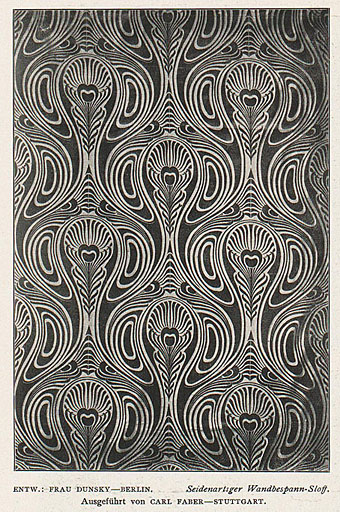
But this isn’t a design from 1970, it actually dates from 1900, the source being a small wallpaper sample that I spotted some years ago in issue 7 of Deutsche Kunst und Dekoration. “Frau Dunsky, Berlin” is named as the designer although there’s no further information about her design in the text. After seeing this I thought I’d have a go at copying the pattern in order to create a digital version but I soon gave up when it became apparent that too much work was required to convert the indistinct image into a sharp outline. I didn’t have a graphics tablet at the time, and my printer had broken down, so the only way to draw an outline was the hard way, using a mouse pointer.
Vectorised and coloured.
A few days ago I pulled out the copy I’d been working on and, since I now have a graphics tablet, decided to try again. Even though creating the outline was easier this time I still wasn’t sure whether a repeatable pattern would be possible. The magazine sample is slightly warped, and the repeated elements don’t match exactly when overlaid, but I was able to compensate for the flaws with some stretching and redrawing in Photoshop. It’s very satisfying getting something like this to work, even more so when it’s a 120-year-old design that you’ve managed to resurrect. I also feel a little familial continuity with this kind of pattern making. My mother worked as a textile designer for a few years in the 1950s, although she never worked on anything like this, the designs produced by her studio were generally chintz-like floral patterns.
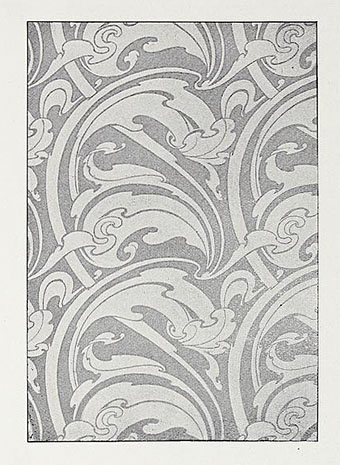
Prior to redrawing the peacock design I’d resurrected another wallpaper design from the same period. This is one of several examples by a French designer, André Morisset, that appeared in issue 15 of L’Art Decoratif. Monsieur Morisset’s design was easier to work into a digital version, being a better reproduction, while the design itself is a square that tiles vertically and horizontally so it’s easier to build into a pattern.
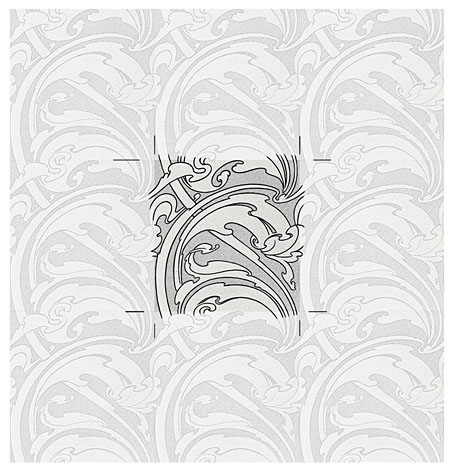
Drawing the outline.
A tessellated tiff.
A coloured vector version.
I’ll be doing a few more things like this when I get the chance. I’m not sure yet whether they’ll find a place in the things I’m working on, but once you have a satisfactory vector outline you can file the art away until you need it later.
Previously on { feuilleton }
• Louis Rhead’s peacocks
• Peacocks
• Rene Beauclair
• Whistler’s Peacock Room
• Beardsley’s Salomé

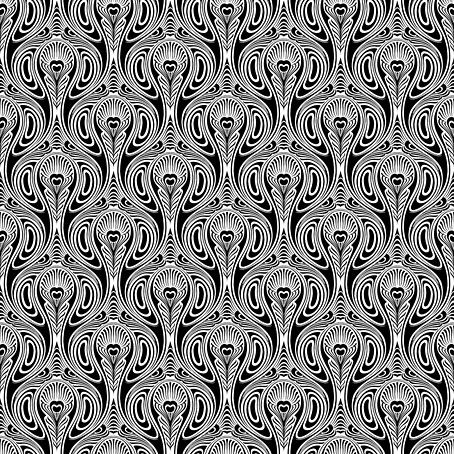
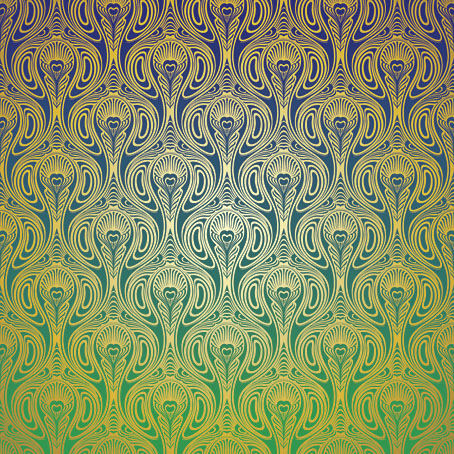
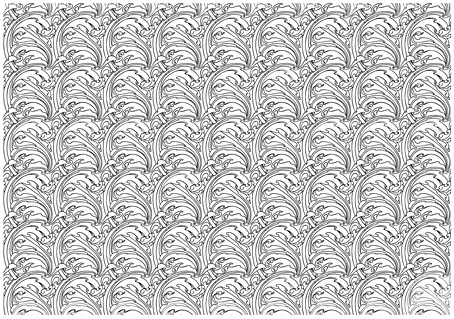
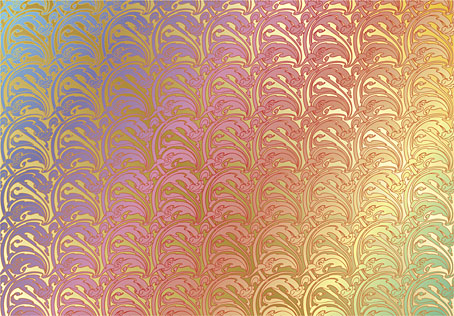
Although I probably fit into the Dana Andrews viewpoint regarding the occult (his early viewpoint I might add) I did once read a book that I am keen to find again, although I have little information to go on. It had a pale blue cover, paperback, with lettering in an arch I think that said something like ‘Occult+Western+World’ or similar and I bought it from the occult book club in the 1980’s as part of a very good value introductory package they advertised in magazines. While impoverished I sold them all to a small occult bookshop that was in Manchester’s then Corn Exchange building, before the dread developers tore out its heart under the guise of reconstruction after the bombing. Anyway, if any of this rings any bells I would love to get a hold of it or even know its title and author.
Hi Tom. I’m afraid that book doesn’t ring any bells with me even though most of the occult books I currently own were bought in the 1980s. A couple of them were from the same shop where you sold yours, Golden Dawn Books. The only occult paperback that I have with a pale blue (or light turquoise) cover is Real Magic by Philip Bonewits:
https://pictures.abebooks.com/isbn/9780722117705-uk-300.jpg